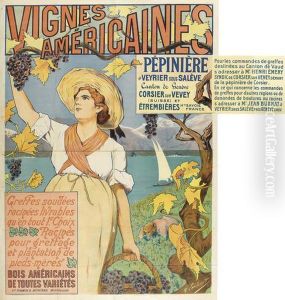Max Leenhardt Paintings
Max Leenhardt, born on February 9, 1853, in Montpellier, France, was a significant figure in the French painting scene of the late 19th and early 20th centuries. Though not as widely recognized as some of his contemporaries, Leenhardt made a substantial impact in the art world with his contributions to the development of landscape painting and his role as a teacher to future generations of artists.
Leenhardt's artistic journey began in his hometown, where he was influenced by the rich cultural heritage of the region. He eventually moved to Paris to further his education and immerse himself in the vibrant art scene that was flourishing during the latter half of the 19th century. In Paris, he studied under renowned artists such as Alexandre Cabanel, a prominent painter associated with the academic art movement. Leenhardt also found inspiration in the works of the Impressionists, whose revolutionary approach to light and color left an indelible mark on his own style.
Despite the prevailing trends of Impressionism and Post-Impressionism during his formative years, Max Leenhardt developed a distinctive style that combined traditional academic techniques with a more personal and expressive approach to landscape painting. His works often depicted the rural countryside of France, capturing the essence of the natural surroundings with a keen eye for detail and atmospheric effects.
In addition to his painting career, Leenhardt was a respected teacher, passing on his knowledge and artistic philosophy to a new generation of artists. He taught at the École des Beaux-Arts in Montpellier, where he influenced numerous students with his emphasis on the importance of nature in art.
Max Leenhardt's legacy is cemented not only in his own works but also in those of his students, who carried forward his teachings and contributed to the diverse tapestry of early 20th-century French art. Leenhardt passed away on December 14, 1941. His works continue to be exhibited and appreciated for their tranquil beauty and historical significance.
